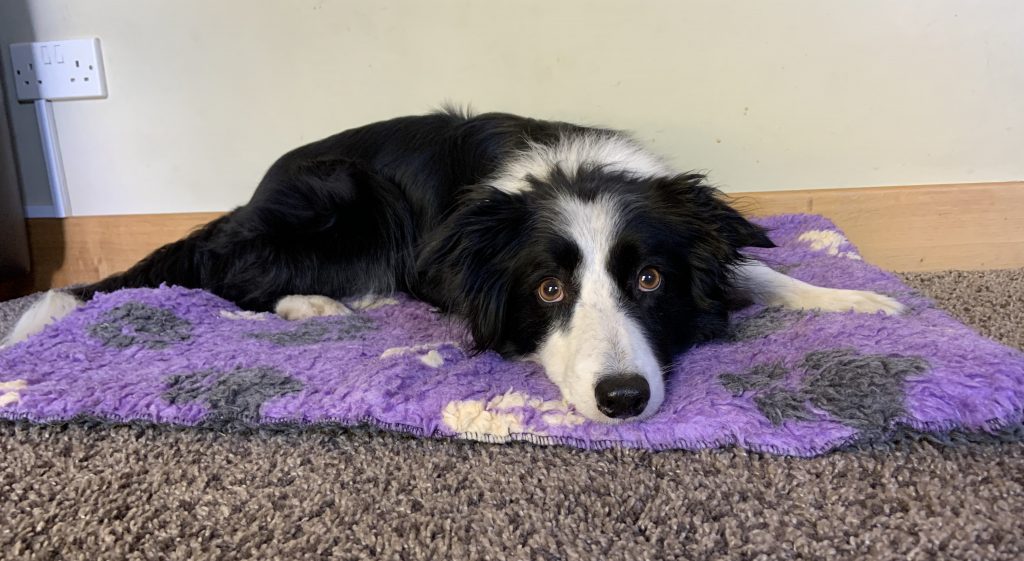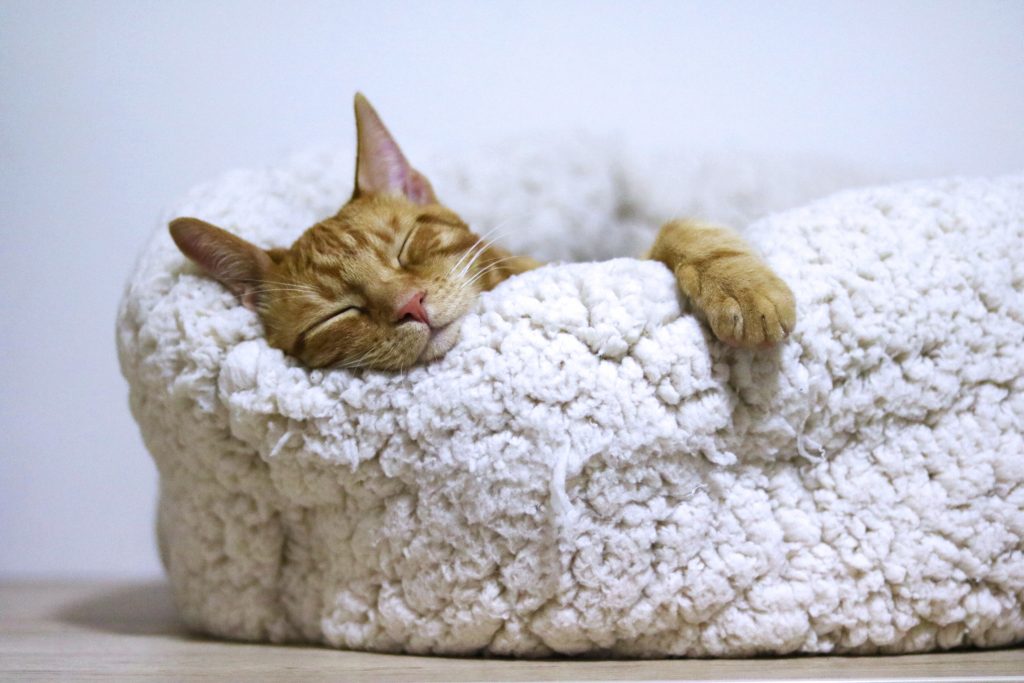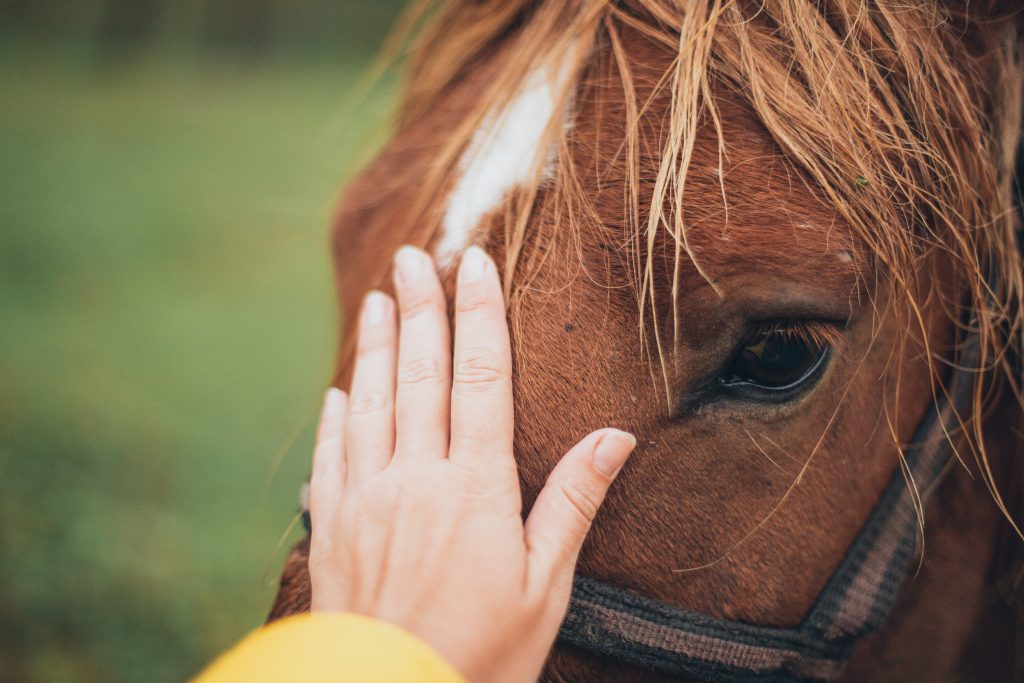Authors: Dr Sandra McCune V.N., B.A.(Mod), Ph.D., Evangelos Diamantakos, BSc (Hons), MSc, PhD cand, Barbara Cooper Hon Assoc RCVS Cert Ed Lic IPD DTM RVN
Many of us, at some time in our lives, will need to stay at home or work from home for an extended period before our normal routine resumes. It could be a period of illness or rehabilitation, changes in our care needs or responsibilities or a time of unemployment. The national lockdown we have returned to due to Covid19, and the subsequent increase in home working, have been an extreme form of such a shift. For many pets and owners, it continues to be a challenging time. Being restricted to home most of the time, having less direct social time with those we care about and needing to adapt to changes in our household make-up and dynamics can take us out of our comfort zone.

Our pet family members also must adapt during these periods of change. They may be experiencing a shift in their routine and the predictability of their daily structure. They may be getting more attention or less attention than usual. They may be sensing that the humans in their household are feeling more anxious than usual. Puppies and kittens may be missing out on the recommended extent and variety of new experiences during their early socialisation period. Dogs may be missing out on time with other dogs, as well as people, if their usual routine includes walks with dog walking friends or time in doggy day care. Horses may not be ridden as regularly.
The change in our availability can also be an enriching time for our pets, having us available more of the time, possibly enjoying more play time, cuddles, training or exercise with us. This closer co-habitation may facilitate the development of stronger, emotionally rewarding relationships and deeper bondsbetween people and their pets. But what happens when that period of extended interaction ends and suddenly, we are no longer spending as much time at home? Pets may experience another shift in their routine and the predictability of their daily structure.
Tips for environmental enrichment for pet owners who are spending more time at home
The term ‘environmental enrichment’ can be defined as the process of improving an animal’s living environment to satisfy
their biological needs and give them the opportunity to exhibit natural
behaviours and instincts. The primary goal of enrichment is to maintain the
animal in good physical and psychological health. For pets who are confined
indoors for most of the day, enrichment can provide the dog or cat with
appropriate stimuli to encourage learning, prevent boredom and build
resilience.
Dog Behaviour and Welfare
An important aspect of the companion dog’s everyday life is their house environment. A dog may spend the vast majority of its time in their owner’s house, so it is crucial to offer them the best quality environment especially during, or after, a period when the owner is at home more than usual.
Dogs, in common with human and all other non-human animals, are using their senses to explore their environments. Enrichment offers them the opportunity to receive different stimuli even if they live in a relatively confined environment.
Below are some ideas to provide your dog with various forms of environmental enrichment.
- Provide their food (both inside the bowl or in toys or puzzle feeders e.g. Kong) in different rooms.
- Slightly change the times of feeding (e.g. ± 15 minutes).
- Change the position of some furniture or household items if that is possible.
- Change the place you habitually sit in your home
- Use the speakers on your phone or computer when talking to others so that your dog can hear voices.
- Ask your friends to talk (over the phone or video call) to your dog
- Play/listen to different styles of music (if you don’t like certain styles you can use a very low volume!).
- Turn on occasionally the tv or radio even if you don’t feel like watching/listening
- Offer your dog the possibility to familiarise itself with various sounds/noises you can find on the internet. Caution: It is absolutely essential to seek advice from a behaviourist before you proceed with this. All unknown and strange sounds/noises must be played at a very low volume that will not affect negatively the dog’s behaviour and wellbeing.
- Occasionally close the window blinds for a few minutes even if you don’t need to.
- Occasionally open the windows for fresh air, first ensuring your dog or other pets cannot escape.
- Change your outfit (e.g. different clothes/gear) and use vaious accessories (e.g. hat, cap, sunglasses).
Try to keep a balance of ideas you try as you don’t need to overdo any of the tips suggested. The goal is to achieve enrichment, not to put your dog under any kind of unnecessary stress. In many cases the slightest change (in time, space and volume) can be enough and can make the difference between a good and not so good environment. It is always advisable to contact your dog behaviourist to discuss any concerns about how to proceed in a smooth and kind way. The above list aims to give you some ideas and inspiration to promote good welfare during times of change in your regular availability to your dog.
Some ideas to keep you and your pet healthy during or after extended ‘stay at home’ periods:
- Time alone – To avoid future problems with receiving less human attention, support your pet to happily spend time alone each day with chews or toys in a safe and quiet spot where they can rest uninterrupted
- Fun activities for mind and body – Have fun with your pet and keep them stimulated. Play, games, problem solving, training, nose work, agility
- Feeding enrichment – Feed part of your pet’s daily ration in occupational feeders or feeding puzzles rather than from a dish. Dog feeding enrichment ideas. Cat feeding enrichment ideas.
Cat Behaviour and Welfare
Cats also benefit from environmental enrichment. One approach is to take advantage of your cat’s natural instinct to work for their food. Presenting a challenge that is appropriate to an animal’s natural ecology and matched to its skill level is likely to provide cognitive, physical and behavioural enrichment. One easy way to implement this is to use food related enrichment devices through food-dispensing toys and puzzle feeders which deliver food in response to the cat interacting with it in the correct way. Feeding enrichment enables owners to take advantage of the natural inclination of cats to work/‘hunt’ for their food and to provide mental stimulation and increase physical activity.

Basic forms can be as simple as a plastic ball with a hole in it where dry food randomly falls out as the cat rolls it around. Many puzzle feeders are commercially sold. Start simple before you introduce your cat to more difficult puzzle feeders to set up your cat for success and fun and to avoid frustration. Some cats are really good problem solvers and with practice will enjoy using the more elaborate feeders where they have to work out how to access the food and perhaps reach in to get the food. If you prefer not to feed dry food, pieces of freeze-dried treats can be placed in the feeding device. Benefits may include weight loss, reduction in cat-cat conflict, reduction in aggression to owner during food prep, reduction in separation anxiety and withdrawal.
Horses
Caring for and riding horses during times of restricted access?
The British Horse Council has published guidance to assist you when looking after and riding horses under lockdown conditions.
How often should you go to the yard?
If you have been advised to keep visits to a minimum without compromising horse’s welfare.
- It is suggested that a buddy system be set up with another person on a livery yard so that the minimum number of people need to go at any one time.
- Avoid going to the yard with friends and family If possible, go to the yard solo.
- Change into clean yard clothes.
- Wash your hands with soap and warm water before leaving the house and before leaving the yard.
- Consider putting your horse on full livery if it is available and financially viable.
- If your horse is on full livery, only make essential yard journeys. Keep in touch about your horse by phone, email or video call with the yard.
What should I do to reduce risks on the yard?
- Respect any restrictions that have been put in place by the owner or manager of the yard.
- Wash hands thoroughly on arrival and when leaving with soap and water or use hand sanitiser gel.
- Maintain social distancing with other livery clients and avoid common areas such as tea rooms, tack room etc. Keep at least 2 metres apart at any time.
- Use your own equipment, if you need to use shared equipment such as wheelbarrows or hosepipes disinfect the areas you are touching or wear disposable gloves.
- Avoid activities that carry an increased risk of injury.
- Wear an up to standard riding hat while handling your horse.
- Assess your horse’s diet and current workload. Reduce its energy based on the reduced levels of exercise that you may be providing.
- Take advantage of feed, hay and bedding suppliers who are offering a delivery service and liaise with them closely to ensure that their service is not impacted.
- Make provision for essential supplies that may become in short supply.
- Limit visitors to the yard and ask those who do visit to follow hygiene and social distancing guidance.
- Wash hands before leaving the yard. If you use a hand sanitiser, make sure that it is at least 60% alcohol.
- Clean your hands when you get into your vehicle.
- Change immediately into fresh clothes once home.
Preparing for ‘stay at home’ periods including self-isolation – what if I am ill?
If you are ill, ensure that there is somebody in your household or a neighbour who can look after your horse. If you have no alternative and it is a question of welfare, you can attend to your horse but only as a last resort and within your own property boundaries when riding.
The Government have not suggested that people cannot ride out. Given that the health services have been stretched to full capacity it is sensible to avoid any activities that carry an increased risk of injury e.g. jumping, fast work, riding a young or spooky horse. Be mindful of others that may be walking, cycling, running and maintain the 2-metre distance.
How else can I exercise my horse?
Lunging, in hand work and turnout are good alternatives to ridden exercise. Travel to competition and training venues or having a coach travel to your yard are now possible.
Non-essential veterinary visits were postponed during lockdown. This included booster vaccinations. The British Equine Veterinary Association had advised members to focus on emergency treatment. This has now relaxed, and vaccinations are now taking place. Vets are encouraging horse owners to maintain social distancing and have their horses tied up so that there is no need for someone to hold the horse.

Can my farrier still call?
Farriers are permitted to work, however it is best to contact them before any visit to discuss precautionary measures so you are ready for them. Do not be offended if they do not accept refreshments . They will bring their own drinks. They will clean their tools between yards.
Useful links
- Pet Advice: What to do with your pets whilst on lock down
- How to keep your pets occupied during the coronavirus
- Enrichment and behavior
- You, your dog, and Covid-19
- Environmental Enrichment for Indoor Cats
- Food puzzles For cats: Feeding for physical and emotional wellbeing
- How to introduce your cat to puzzle feeders
- Puzzle Feeders
- British Horse Council
- British Horse Society
- World Horse Welfare
- British Grooms Association
- The Equestrian Employers Association
- Gov.UK website
- British Eventing
- RCVS
